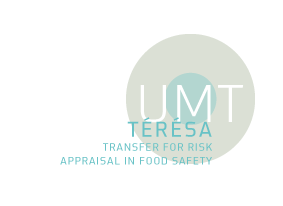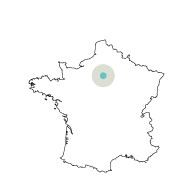
Coordination
Partners
Objectives
Whilst the consequences of food crises in the field of health are significant, so are the consequences in the field of economics, as production chains are threatened with each critical episode. Thus, notably in the case of the ‘Hygiene Packet’, it is essential that the relevant bodies ensure an appraisal from public and private stakeholders have comparable methods and tools available, as well as a responsive exchange capacity regarding data and information.
Four main objectives
To design, develop and disseminate new appraisal methodologies in terms of microbiological safety of food products, via several research projects.
To consolidate appraisals, which technical institute partners and Anses require when interacting with industrial operators and public authorities.
To carry out necessary reviews and training for the durability of long term skills.
To actively participate in the various national appraisal networks (Afnor, Anses, DGAL, etc.) in the fields of health and safety for food products and processes.
This UMT is located in Maisons-Alfort.
Actions
Action 1: improvement of molecular methods for identification and characterization of the viruses responsible for foodborne infection epidemics (e.g. Norovirus) for evaluation of the reliability of treatment processes and the epidemiological dimension in foodstuffs.
Methodology: set up methods for the extraction and detection of Norovirus and Hepatitis A in food matrices, based on the overall strategy and recommendations outlined by the CEN (European Committee for Standardization) group «Detection of viruses in food». It will then be necessary to develop specific detection methods for other problematic enteric viruses, following the same approach.
Technology: to study the impact of technological and hygiene treatments applied in food industries to enteric viruses and, on the basis of obtained results, propose improvements aiming to increase the effectiveness of the processes.
Epidemiology: to supply information on the prevalence and viral load of a sample of food matrices that are at high risk of viral contamination.
Action 2: development and transfer of characterization methods of Escherichia coli verotoxins in products.
Development and transfer of characterization methods of Escherichia coli verotoxins in products. These E. coli have been the subject of the latest health crises, and simultaneously present great diversity and a strong prevalence in forms that are not as yet toxic. It is thus essential, after research carried out on genes and their expression, to have access to methodologies and the necessary expertise, in order to identify as early as possible the exact nature of the danger encountered during tests carried out by operators (prepared meat products, industrial butchery, cheese making, etc.) as has been stipulated by new regulatory requirements.
Development of characterization tools by real time PCR (Polymerase Chain Reaction) on various specific molecular models of various types, characterized as pathogens, by using multiple chemistries (Taq Man, SyberGreen, etc.).
Improvement of extraction methodologies for bacterial nucleic acids from food products, basic limiting factors in performance of these methods due to potential inhibitions in PCRs.
Action 3: development and transfer of methods enabling rapid extraction and detection of the various toxins produced by Staphylococcus aureus and evaluation of toxin production conditions in products.
Development and transfer of methodology enabling rapid and simple detection and confirmation of the presence of natural toxins in pathogenic concentration for the consumer. In this context, the scientific objective is also to improve extraction methods when using samples from food matrices, to use transferable quantification capabilities for classic toxins and emerging toxins via Elisa tests, and to set up methods for peak confirmation, by using chromatography tools combined with mass spectrometry.
Action 4: distribution and composition of the micro-colonies that constitute persistent microbiota on workshop surfaces in meat supply chains.
Acquisition of knowledge relating to the distribution of microbial cells (number and size of micro-colonies), the identity of micro-organisms, their quantity and physiological state (the so-called viable but non-culturable state) on workshop surfaces in meat supply chains after cleaning and disinfection operations.





